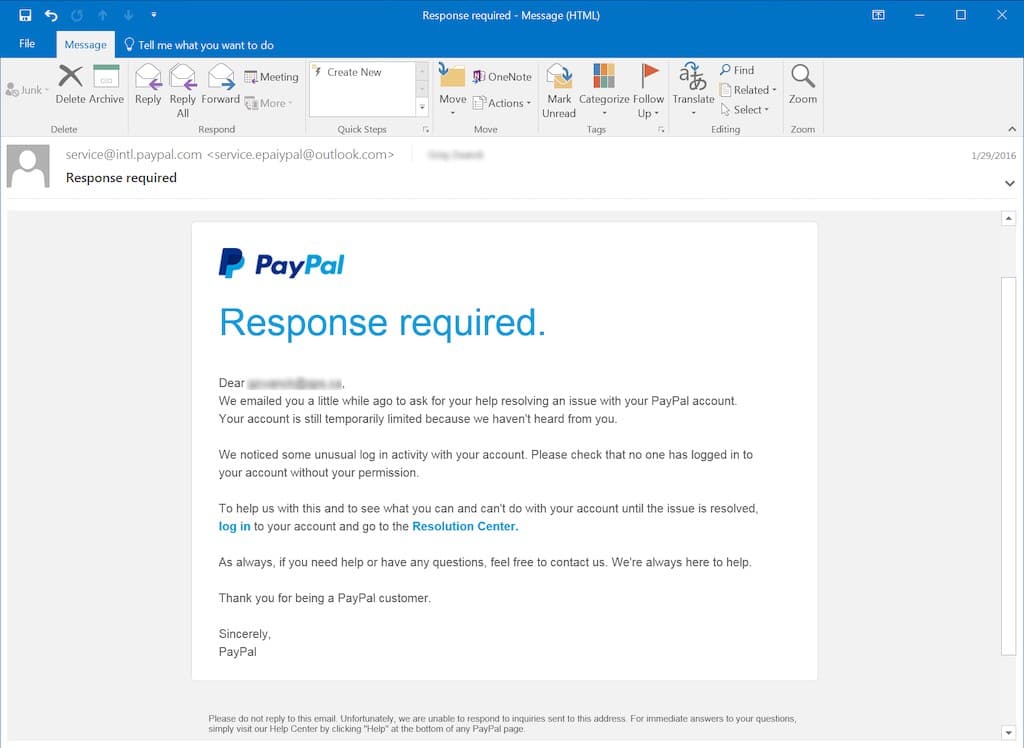Do you know how many breaches there are in corporate networks every year?

Many people are affected, and many of those happen in companies.
Do you know how many of those social breaches are caused by employees who don’t have the proper knowledge to secure their accounts?
According to an IBM report about cybersecurity, regarding the impact of security incidents, “over 95 percent of all incidents investigated recognize “human error” as a contributing factor.”
Likely over 95% of cybersecurity incidents are because of human error.
No, people are getting hacked, they aren’t getting information stolen like their wallet. It’s as simple as their lack of knowledge or skills to keep their information safe. Therefore, they leak passwords, accidentally give bad actors their information, and unwillingly hand over important information.
That means if a company is not taking it seriously to train employees about cybersecurity, it is enabling them and essentially giving away company data.
We live in a hyper-connected world where digital threats lurk at every corner of the internet. The need for robust cybersecurity measures has never been more pressing, and companies are failing employees and their customers more and more.
The longer employees go without proper cybersecurity training, the more at risk they are of leaking important company information. That puts companies at risk of losing customer trust and being exposed to legal risks.
Securing your business and customer information is essential. Tailored cybersecurity training is not just a precautionary measure, it’s a necessity. Companies that invest in comprehensive training programs drastically reduce the risk of breaches, transforming their employees from potential liabilities into crucial lines of defense.
Consider the high-profile breaches at companies like Equifax and Facebook, among the largest data breaches in history. Most companies likely don’t have that amount of data to put them on that list, but it doesn’t take that level of risk to have a huge impact on business.
Insufficient employee awareness significantly contributes to data breaches, resulting in financial losses and erosion of brand trust. By proactively educating staff on recognizing and mitigating cyber threats, you protect business assets and cultivate a culture of vigilance and responsibility.
It’s time to prioritize employee cybersecurity training and ensure your team isn’t the weak link in today’s digital age.
Understand the Importance of Cybersecurity Training
In some cases, data is more valuable than gold. That means employee cybersecurity training is the cornerstone of protecting any organization’s data. Training is the first line of defence against company data breaches.
Quality cybersecurity training equips staff with the knowledge to identify potential threats, including phishing emails, malicious attachments, and unauthorized data access. It also helps them understand the protocols to follow in case of a suspected breach.
Without this foundational awareness, even the most advanced security technologies can be rendered moot by a single click on a deceptive link.
Quality cybersecurity training ensures that staff are equipped with the skills and knowledge to identify and respond to potential threats.
Beyond threat recognition, training helps employees use good security practices relating to passwords, multi-factor authentication, and simply not clicking on untrustworthy links. It also helps employees understand how to comply with industry regulations like GDPR, HIPAA, and PCI DSS.
It’s not always about good passwords but also about how to store and protect customer data properly, whether they’re using email or developing a database.
Properly trained employees contribute to reduced incident response times, enabling IT teams to isolate and remediate threats quickly. Investing in employee cybersecurity training isn’t just about avoiding headline-making breaches; it’s also about preserving customer trust, safeguarding intellectual property, and maintaining uninterrupted business operations.
Common Cyber Threats Faced by Employees
If you have people working at your company, then there’s a huge chance one of them will cause a cybersecurity incident. That’s simply the fact of the matter since a huge percentage of incidents are caused by human error.
Phishing remains the most prevalent method attackers use to harvest credentials or deploy malware. Social engineering tactics exploit human psychology, leading employees to disclose sensitive information or click on bogus links.

When an attacker gets access to the network, they can steal or lock down data, turning the attack into a ransomware attack. That means they encrypt corporate data and demand payment for decryption keys, potentially costing companies millions in downtime and recovery.
Insider threats, whether malicious or accidental, pose a significant risk. Employees might inadvertently share confidential documents on unsecured platforms or fall for spear-phishing attempts that mimic executive communications. Business email compromise (BEC) schemes trick employees into transferring funds or sharing sensitive data.
Understanding these common threats and integrating them into regular employee cybersecurity training ensures that staff remain vigilant and informed.
Impact of Human Error on Corporate Security
Human error remains the leading cause of data breaches worldwide. A misplaced USB drive with unencrypted data, a weak password, or a misconfigured cloud setting can open the door to devastating intrusions.
In 2024, the global average cost of a data breach was $4.88M, according to an IBM report. Those costs can include forensic investigations, legal fees, customer notifications, and reputational damage. Many of these incidents can be directly linked to employees lacking basic cybersecurity knowledge.
A data breach can cost upwards of $4.88M to resolve.
Consider how a simple mistake, like responding to a phishing email, can cascade into extensive network compromises. With technological steps to increase security requirements for employees in addition to proper training, companies can reduce or even eliminate the impact of human error.
Helping employees choose (and not write down) secure passwords, scrutinize emails before taking action, and handle data securely, organizations can drastically reduce the frequency and severity of breaches caused by human error.
When a company pairs its internal security experts with professional enterprise digital training experts, the solution for protecting the company and its customers will be powerful. Turning to external agencies alone leaves significant internal expertise and feedback out of the loop, leaving a great risk.
Remember, your company is the security expert, but digital training experts are skilled in the training.
Examples: The Consequences of Insufficient Training
Lack of adequate cybersecurity preparation and processes can have dire consequences. In 2014, Target’s breach began with credentials stolen from a third-party HVAC vendor. Once inside, attackers moved undetected across the network for weeks, ultimately stealing payment card data from 40 million customers.
The total cost of remediation and legal settlements exceeded $200 million.

Similarly, Sony Pictures fell victim to a coordinated attack in 2014 that exploited social engineering techniques. The perpetrators leaked confidential emails and unreleased films, resulting in estimated losses of over $100 million, plus lasting reputational harm.
These examples highlight how employee cybersecurity training, or lack thereof, can significantly impact whether a business withstands or succumbs to an attack.
Elements of an Effective Cybersecurity Training Program
An effective employee cybersecurity training program begins with a thorough risk assessment. Identify the data types your organization handles, the regulatory requirements you must follow, and the most likely threat vectors.
This analysis will inform internal security specialists about what security methods are ideal. The same experts in security in your organization should be the experts on what employees need to keep your company’s information secure. Their expertise will help inform the training experts on what’s required to train employees, what to look for, and how to secure their access to company information properly.
Interactive elements like simulated phishing attacks, scenario-based learning, and gamification help employees learn what they need to know effectively in a way they can immediately apply to their job.
Show employees what to look for and what to do rather than tell them.
Telling employees all the potential threats doesn’t have the same impact as showing them with a scenario or a realistic story.
Regular refresher content, updated in response to emerging threats, prevents knowledge decay. That could be a short message on the enterprise social network or a quick video with an important scenario they need to know.
Security training is one part of ensuring employees have what they need to keep company data secure. Clear methods and policies for incident reporting and data handling are essential.
Organizations can turn employee cybersecurity training from a checkbox exercise into an impactful defense mechanism with the right type of training that’s specific and custom to your company.
Encouraging a Culture of Cybersecurity Awareness
Training alone isn’t enough; it must be reinforced by a culture that values security at every level. That means not purchasing an off-the-shelf generic security training program. Nothing tells employees you care less for theirs and your customers than generic training with little impact on them.
Leadership should model best practices, using multi-factor authentication, securing devices, and reporting suspicious activities. Recognizing and rewarding employees who identify potential threats or contribute to security improvements is also a great way to encourage best security practices.
Regular communications, including newsletters, intranet posts, or brief video updates, keep cybersecurity top of mind. Share anonymized breach stories, highlight emerging threats, and spotlight team achievements in thwarting attacks.
Training is a good start, but communication and training will take your company where it needs to go to keep network security. When employees see that security is a shared responsibility rather than an IT obligation, they’re more likely to remain vigilant and proactive.
Measuring the Effectiveness of Employee Training
If security risks and other companies’ experiences aren’t enough to justify training, some measurements of its effects may be needed.
Tracking metrics such as reduction in phishing click-through rates and the number of reported incidents can show the immediate impact of training. Pre- and post-training assessments reveal knowledge gains, while simulated attack results show real-world application.
Effective cybersecurity training is essential, but sometimes it’s necessary to demonstrate its value.
Employee feedback surveys can uncover areas for improvement, such as confusing content or training fatigue. Correlate training outcomes with actual security incidents to demonstrate return on investment. By continually analyzing data, companies can refine their training strategies, target high-risk groups, and ensure resources are allocated where they deliver the greatest risk reduction.
Continuous Improvement Strategies for Cybersecurity Education
Cyber threats evolve rapidly, so employee cybersecurity training must evolve too. Just as keeping all training up-to-date and regularly evaluating its accuracy and usefulness, this must be done with security training too.
Establish a review cycle to update training content based on the latest company security updates, general threat intelligence, and compliance changes. Incorporate feedback from incident investigations to address real vulnerabilities discovered in your environment.
This is also a great way to develop better and more effective scenarios that employees connect with. Do you think they’ll connect better with a generic example or one from your company? I think you know the answer.
Invest in advanced training for IT and security teams, covering topics like threat hunting, secure coding, and incident response. You may work with a dedicated security company on this, but the security and training experts should never be one and the same.
Training experts and security experts should never be one in the same.
Partner with external experts or have internal security experts attend industry conferences to stay abreast of emerging attack techniques. That knowledge will be invaluable when working with training experts to develop effective security training.
Organizations can maintain a resilient and informed workforce ready to tackle tomorrow’s challenges by treating cybersecurity education as a dynamic initiative rather than a one-time event.
Wrap Up
Employee cybersecurity training is no longer optional, it’s a critical line of defense against ever-present digital threats. By investing in tailored programs, interactive simulations, and a culture of awareness, organizations can transform their workforce into vigilant guardians of sensitive data.
Empowering employees reduces the risk of human error, slashes potential breach costs, and strengthens overall security posture. Make employee cybersecurity training a strategic priority today, and ensure your business remains resilient in the face of tomorrow’s cyber challenges.
There’s no better place to start than discussing your company’s needs with training experts. The training experts should be paired with internal security experts to develop more effective training.
Schedule a free consultation today to discuss with our training experts how we can work with your security experts to develop training that effectively prepares employees to keep your company safe from data breaches.
